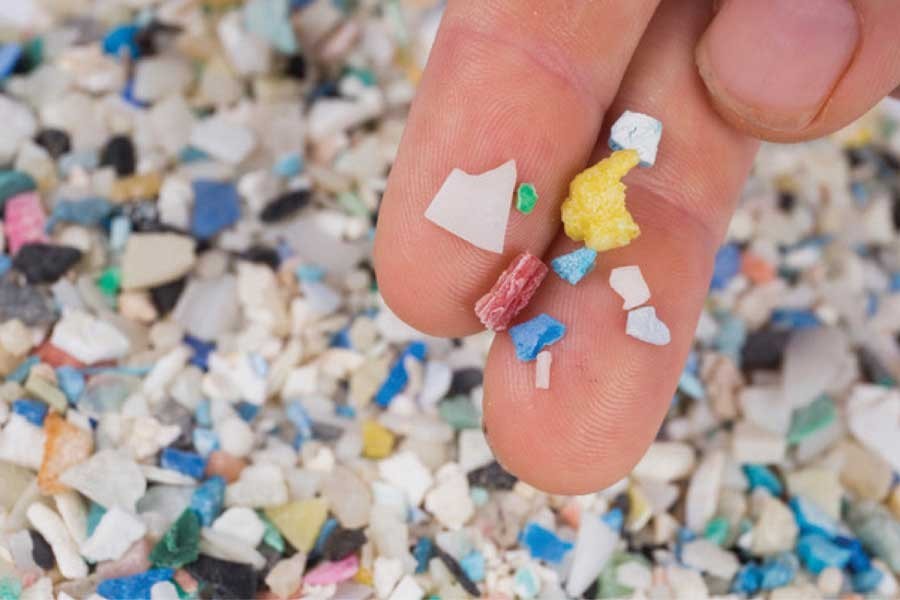Of the over 8.9 billion tonnes of plastics that the world produced in the past six decades, only 9.0 per cent have been recycled, while the rest 91 per cent have ended up in the natural environment. Plastic particles smaller than 5.0 millimetres called microplastics can enter human body directly from plastic utensils and containers of foods, drinks and medicine people use. Also, these microplastics can enter the food chain from effluents in the form of wastewater discharged by different industries. These include dyeing, printing, washing, battery-making and pharmaceutical factories. Most of these fine microparticles of plastic, or microplastics, can pass through the filters of the factories' effluent treatment plants (ETPs). In this connection, a group of Bangladeshi scientists recently carried out a study on the microplastics contents of the samples of sludge and waste water entering as well as coming out of the ETP tanks of different industrial units. Their findings are revealing. For, according to those researchers, around 62 per cent of the microplastics could be removed from the treated waste water. Evidently, 38 per cent of the microplastics remained in the wastewater that was released in the environment.
As the study result further showed, the sludges from pharmaceutical industries as well as the wastewater both going into and coming out of the ETPs of dyeing plants contained the highest amounts of the microplastics. This is no doubt a cause for concern, especially from the public hearth perspective. But the study findings in question only reflected the presence of microplastics in the samples from industries that have ETP facility. Then what about other similar industries that lack such effluent treatment arrangements? Obviously, they are polluting the country's entire ecosystem unhindered.
While the government has some arrangements to monitor the treated waste materials from industries to ensure environmental safety, there is no such system, nor policy regarding microplastics. So, measures need to be in place to monitor and control the release of these microplastics in freshwater reservoirs and the rivers of the country. Further, these microplastics in the environment, especially, in the food chain, constitute a potential threat to public health. Similarly, microplastics floating in the air can also get into our bloodstream through inhalation. Recently, scientists in the Netherlands and the UK found plastic particles deep into the lungs of surgical patients. Such particles were found also in the blood donated for patients. Obviously, it was through inhaled air that those microplastics could enter the inner parts of human body. So, along with waste water from factories, airborne microplastics are yet another area of concern. So, efforts from all quarters concerned should be on to identify all possible sources of plastic microparticles and take necessary measures to eliminate those.
Given that the filters of the ETPs in use in the country's different industries have been found to be partially effective at removing microplastics from wastewater, steps should be taken to procure ETPs that are better at handling microplastics. Notably, the awareness about microplastics and their possible impact on the unsuspecting people and animals ingesting them is rather of recent origin (actually, the word, microplastics, was first used by a marine scientist of the UK in 2004). Those concerned about environment and health need to work together to track the microplastics flowing into the environment from different sources and devise strategies to control those.


